Building a Geothermal Greenhouse
What is going on Steemit Community!
This is my story about building a geothermal greenhouse.
Intro
After doing a school project I decided I wanted to get into selling locally grown hydroponic produce. I began by growing hydroponic lettuce in my room under LED lights.
I quickly learned that overhead costs associated with indoor growing would be my biggest challenge to operating a profitable business. A greenhouse had to be built. Where I live it gets really hot, the plants I want to grow do not grow here year round because of the climate. I am in the Sonoran Desert.
I decided that building a geothermal greenhouse was my best option. If it works I can grow food year round because it would be climate controlled. There is not a lot of information out there on these things so I had to design and build it without any instructions.
My Objectives
The idea behind building this greenhouse was to try and use geothermal energy to regulate the temperature inside the greenhouse and also the hydroponic water. The concepts is the deeper you go into the earth the more constant the temperature is down there. For example, a cave stays around the same temperature all year long.
There were two objectives that I wanted to test when I built this. The first was if I could get the hydroponic water to be cooler in the summer, and warmer in the winter. In hydroponics you have to control the temperature range of the roots for the plants to grow.
My second objective was to either heat or cool the greenhouse with geothermal energy using a pipe to send air under ground and for it come out the other side. It will be cooler in the summer and warmer in the winter. It is the same idea as above but with air instead of water.
If you are confused do not worry. The idea is that warm air/water goes underground. Since it stays at a relatively consistent temperature underground there will be a heat transfer with air/water that is a different temperature than it is. So, in the winter the cold air will go underground. It will be warmer underground than it is above ground. The cold air will get warmed up while it is traveling underground. It will emerge as warmer air. The same idea works in reverse, if it is summer and the air is warm it will come out as cooler than it was before.
The Design
Unfortunately, I do not have the original greenhouse designs. My sister's dog went to the bathroom on them.
I have drawn a design of the geothermal layout of the greenhouse.
A lot is happening in this diagram but I will try to make it understandable.
On the far left and the far right are a group of two barrels that are joined by a third barrel that is underground. They have the same function but are on the opposite sides of the greenhouse. The purpose for this is so I can have 2 different types of plants or experiments going on at the same time.
Now, lets look at the group of barrels ( group of three) on the far right side of the diagram. The very far right barrel has a water pump that sends nutrient water to the plants. The nutrient water drips on the plants, the remaining water that is not consumed by the plant collects into a drain pipe and is sent to the drain barrel. This is the barrel that is the second farthest to the right. The two barrels that I have talked about are mutually connected by a third barrel that is buried 8 feet (2.4 meters) under ground. This barrel is underground so it can absorb excess heat or cold from the incoming water. This happens because the earth that surrounds it will absorb any temperature fluctuations from the water.
There are no water pumps that send the water underground. What is happening is that water is always finding a state of equilibrium. When the drain tank ends up with more water than the nutrient tank, it gets forced through the underground tank until the water is at the exact same height in the other tank. Since the plants are being watered all day this is a never ending process.
Now I will explain what is going on the middle of the diagram. Instead of trying to warm up or cool down water, I am trying to warm up or cool down air. Air is forced into one end of the pipe by a fan. It is pushed through 150 feet (46 meters) of 4 inch (10 centimeters) perforated drain pipe. As you can see below the air pipe is laid on top of three barrels that are on their side. The barrels are filled up with water and are sealed off. The reasoning behind this is that water is better at absorbing excess heat or cold compared to the ground.
The Build
The first step in this process was to dig a hole. The hole ended up being 23 feet (7 meters) long and 8 feet (2.4 meters) deep.
After digging the hole the underground barrels and plumbing were installed. The three barrels that are in the middle of the diagram are under the mud in the middle of the picture. I had to do that so weight of the all the dirt that is placed on top of them would not crush them. Think of it as the concrete that supports a subway.
Once the mud dried it was as hard as a rock. I could then begin to put the perforated drain pipe in place. I would pack dirt very tight around perforated pipe so it would not cave in on itself. It is the same concept I explained earlier.
Once all the work on the geothermal side of this is complete, I began to frame the greenhouse. It is mostly made of 3/4 inch PVC, wood, screws and 1/2 inch conduit pipe to support the rafters.
The Result
So you have been doing all this reading and are probably wondering what the results are. Well, its a mixed bag. In the winter it would get below freezing and my water tanks would have water that was 20 to 25 degrees Fahrenheit warmer than air temperature. I know that is not a great comparison but the water that is outside on those nights would become a block of solid ice.
The air tubing would warm up the air from intake to outtake on cold nights as well. Typically on a night that is freezing it would warm the air up from intake to outtake by 9 to 10 degrees Fahrenheit. Unfortunately, I did not have double layer of greenhouse plastic on the greenhouse. This means that in cold conditions a greenhouse cannot retain much heat, think of double pane windows. All the heat that was gained from this was lost right away. During the summer it is way too hot for the air intake to make any difference. It gets to be around 110 degrees Fahrenheit (43 C) on a daily basis in the summer.
This is what the greenhouse looks like today. That is 40% shade cloth on top of it.
In this picture you are looking at vertical hydroponics. There are lettuce, kale and swiss chard growing out of Zip Grow Towers.
This is pesto basil growing out of the Zip Grow Towers.
This is the greenhouse with mostly basil growing from the towers. There are tomatoes growing in the middle section. Can you spot the swiss chard?
This is a tower of basil, everyone at the farmers market would say something like, "look at that basil tree."
A couple of months ago we had a big storm and the greenhouse withstood the 40 + MPH wind. I have since reinforced the rafters. You can see the PVC really flexing at the end of the video.
Here is what the greenhouse looks like today. The basil did not sell for the price I was looking to get, so, I tore it all out. Currently the greenhouse is being converted to growing tomatoes. In the back left of the greenhouse is a swamp cooler. This is what I use to cool down the greenhouse now instead of the underground air pipe.
I am really excited about what you see in this picture. This is lettuce being grown during the summer in Tucson, AZ. Right now the closest grown lettuce is in California, it has to travel a minimum of 600 miles (965 kilometers) to get to town.
This is today's tomato harvest. It is mostly Texas Cherry tomatoes and Yellow Pear tomatoes.
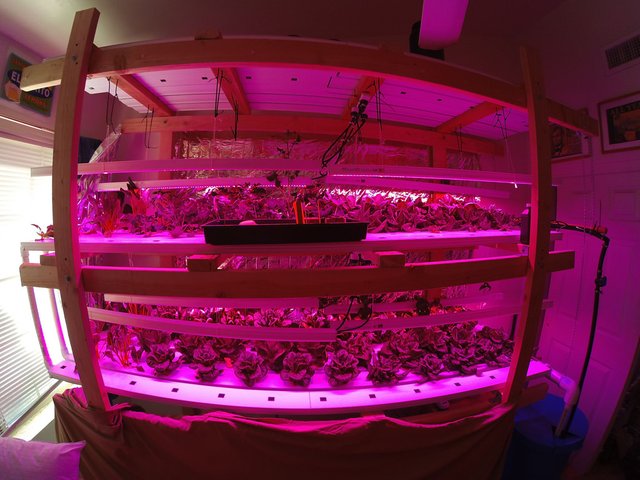
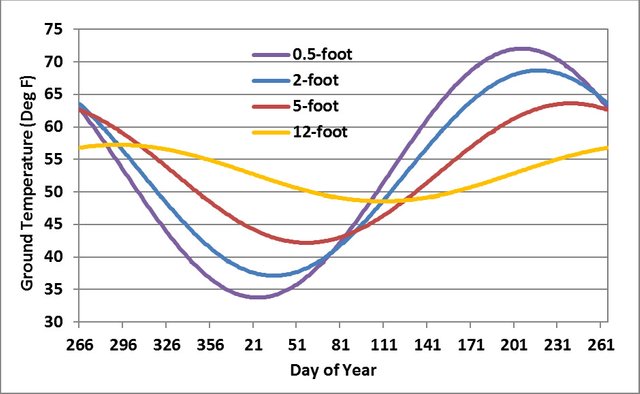
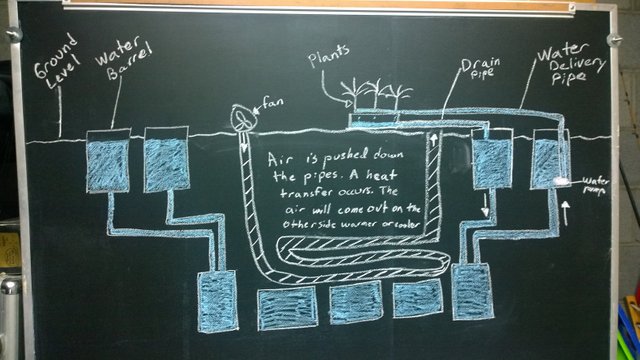
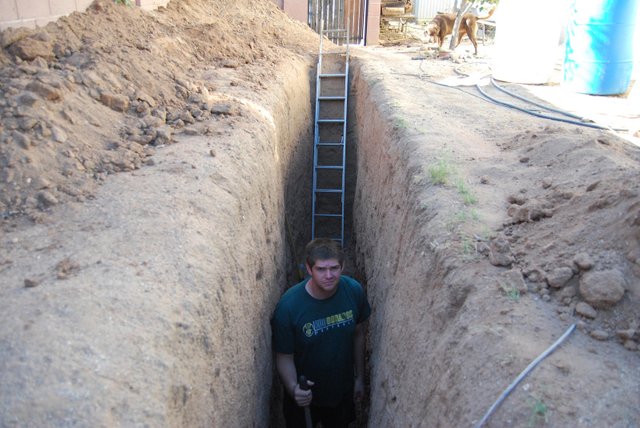
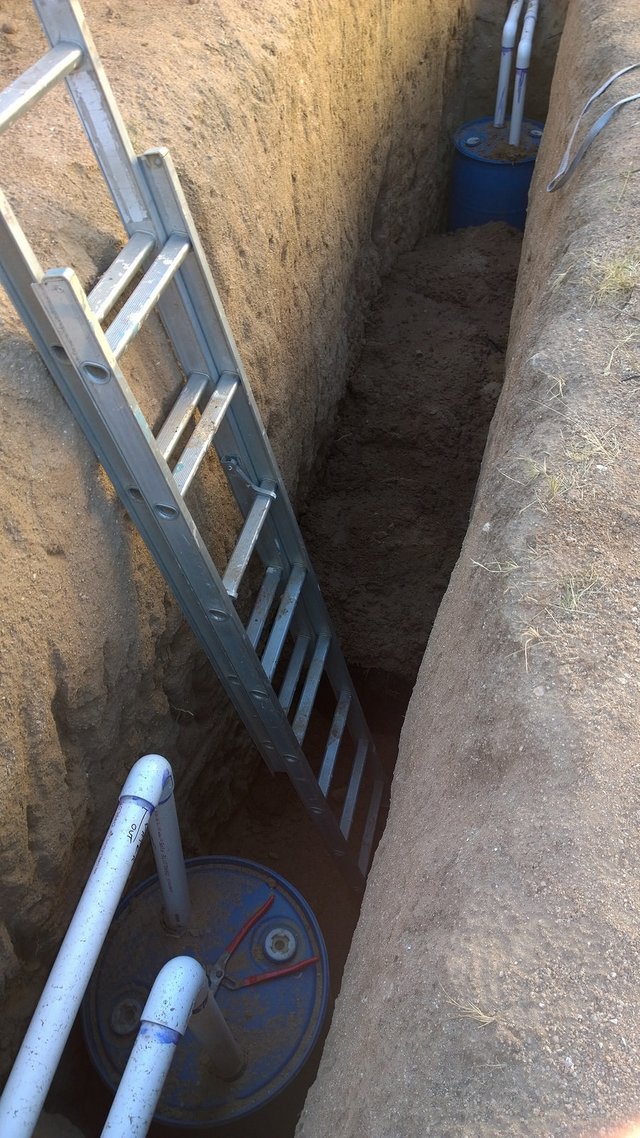
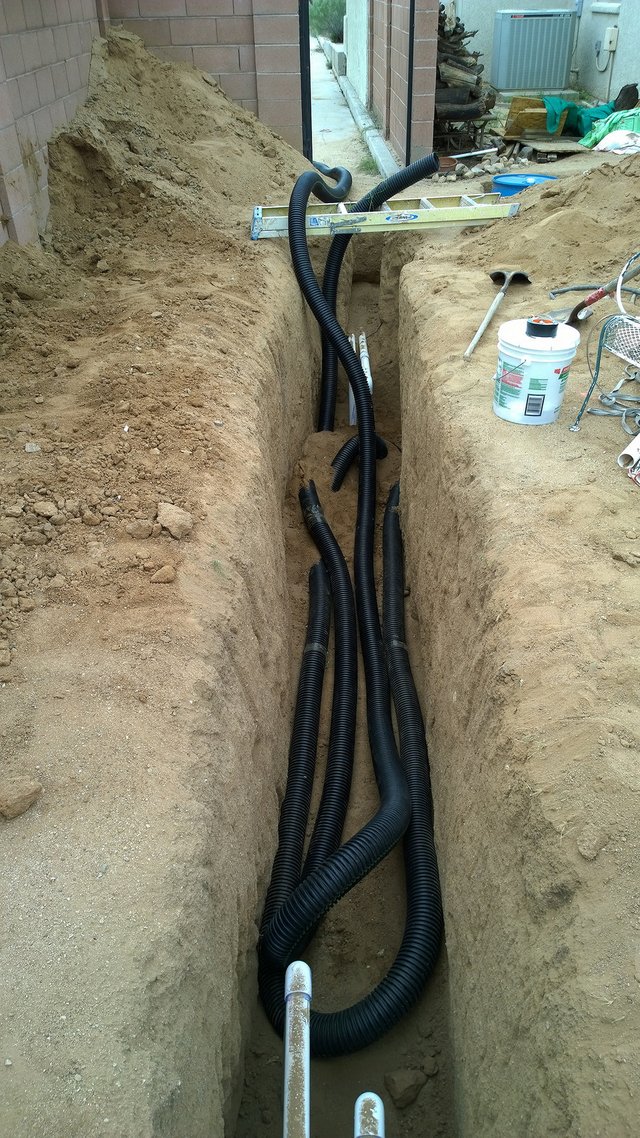
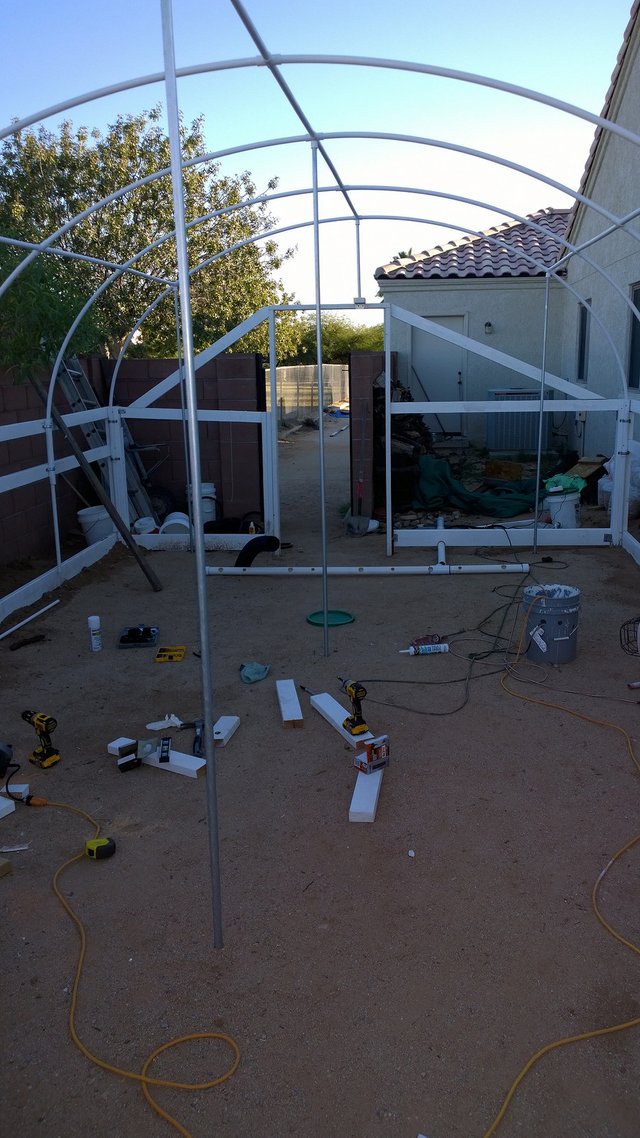
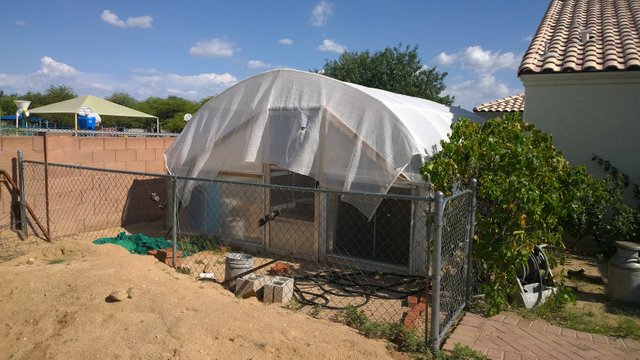
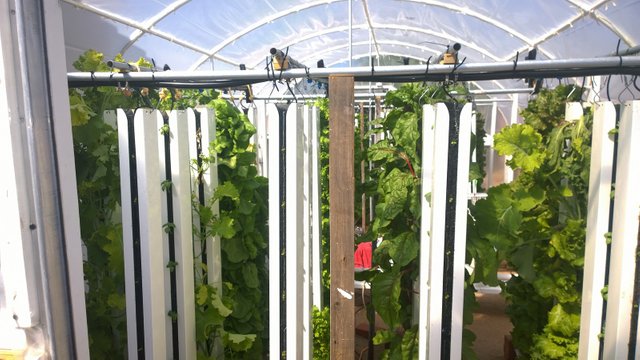
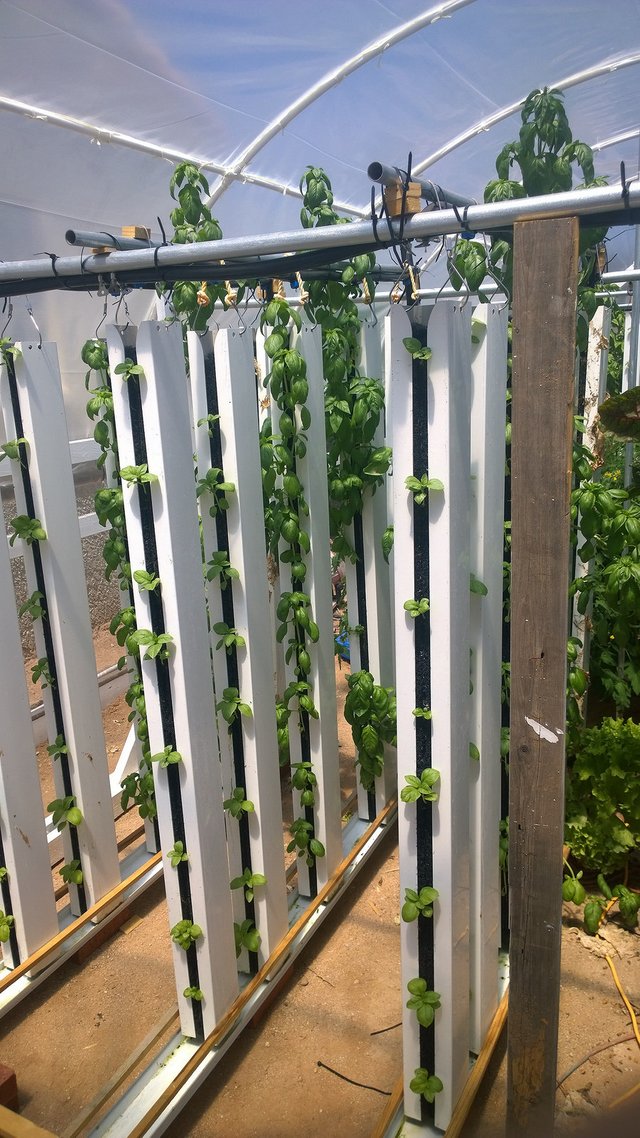
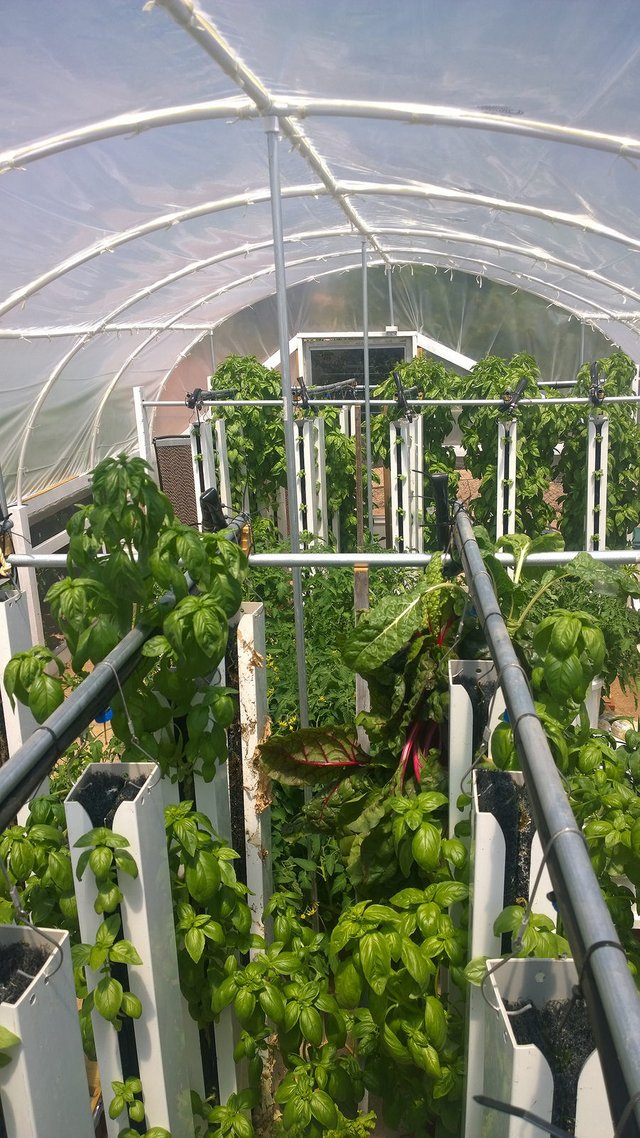
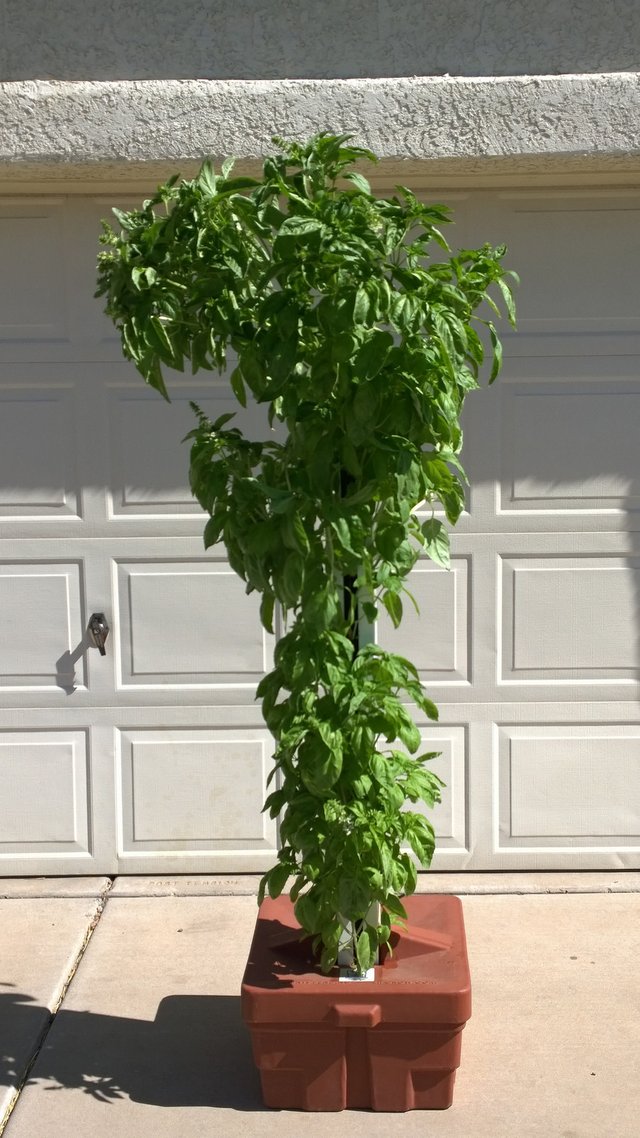
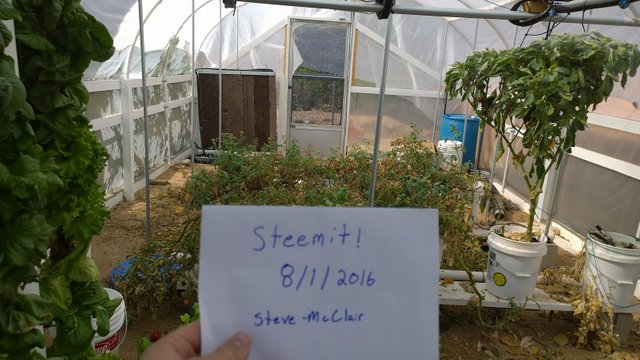
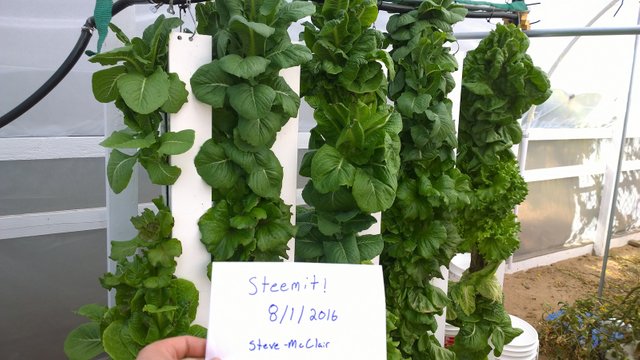
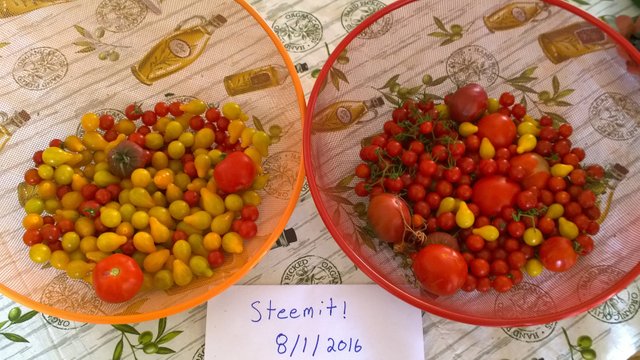
Great job Steve! Another great post! When you dug that trench by hand I thought you actually might be a cyborg.
A big shout out to you on a beautiful project and post! That's some big job that you did and likely it will inspire others! Keep up the excellent work!
IMPRESSIVE PROJECT !! thanks for sharing the knowledge in such rich detail. ONE THING TOUGH: watch out when you get inside trenches because they tend to collapse burying alive the people inside. ive seen it in my experience as earth work contractor.
Nice setup, I too have difficulty cooling our greenhouse down in the summer, so we make that our cleanout time, we run our season from Sep-June. Nothing grows well in 90+ degree temps, and with our high humidity swamp coolers are really a small bandaid on that problem. I thought about a geothermal solution as well but the size of our greenhouse makes an efficient system costly to say the least.
Where did you try to sell your basil, we got to farmer's markets around Houston and can sell it for a good price, you might look into markets in your area if you haven't already.
Anyway great post and keep it up!
I tried selling at a farmers market and to restaurants. In Tucson the summer is low season, we have a lot of snowbirds and they go up north for the summer. So, when I began to sell at the farmers market there was very little buying pressure for anything. Also, summer basil is in its peak season so the price of it is depressed.
I sell in the off season, we can't compete in the summer, everyone wants the ground grown tomatoes.
@steve-mcclair very very cool! who doesn't want one! upvoted and followed! we just released our second edition, check it out if you get a moment!
Hey Steve I literally just found about geothermal greenhouses a few days ago and have been trying to find someone that has tested out the design here locally and here you are!
Do you think the geothermal hoses would be able to handle the temps if the plastic sheets were doubled up and inflated like the user LDSprepper on youtube?
Also is your trench size equivelant to the cubic space of your greenhouse?
Do you think it would help having extra hose length undergound to displace the extra high temps we experience?
I see your yard isn't very big to support all the extra digging required.
I have a lot of questions so maybe it would be easier to communicate via email. [email protected] is my address. cheers bud
As long as heat is not being lost I am sure the pipes would eventually heat up the greenhouse. I was getting the air to increase about 9 to 10 degrees F when the intake was around freezing. I don't know much about how trench size would effect the heating and cooling properties. I really came up with this idea out of my head and just went for it. I found very little information about it on the internet until after I had built it. Curtis Stone who is in Canada built a really good passive solar greenhouse but I think it cost him around $30,000 CAD.
Hi! This post has a Flesch-Kincaid grade level of 4.9 and reading ease of 87%. This puts the writing level on par with Ernest Hemingway and Donald Trump.
Keep up the great work @steve-mcclair
Upvoted